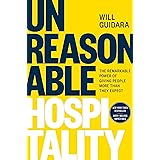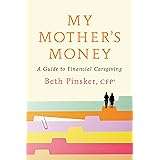Have you ever wondered how some traders consistently identify high-probability setups in dynamic markets like gold? The video above brilliantly showcases a powerful approach to trading gold (XAUUSD) on the 15-minute timeframe, resulting in a reported $2,000 profit in just one hour. This impressive outcome stems from a meticulously applied strategy centered around the Change of Character (CHoCH) entry model, offering critical insights into bearish confirmations and precise supply zone entries. However, merely observing price action without a structured methodology can lead to significant losses. This post delves deeper into the intricacies of this expert-level gold trading strategy, enhancing your understanding beyond the initial demonstration.
Decoding the Gold 15M Trading Strategy: The CHoCH Entry Model
The Change of Character (CHoCH) is a fundamental concept in Smart Money Concepts (SMC) and price action analysis, signaling a potential shift in short-term market direction. As shown in the video, it’s not about randomly entering on the first bearish candle. Conversely, it’s about waiting for a structural shift that provides high-conviction confirmation for a reversal.
In the context of gold trading on the 15-minute timeframe, a CHoCH indicates that the prevailing market structure—be it bullish with higher highs (HH) and higher lows (HL), or bearish with lower lows (LL) and lower highs (LH)—has been broken. This break often occurs after significant liquidity sweeps or at identifiable supply/demand zones from higher timeframes. Many studies indicate that structural breaks, when confirmed by subsequent price action, offer a higher probability edge compared to simple trend following in overextended markets.
The Anatomy of a Bearish CHoCH Confirmation in Gold Trading
Understanding the sequence of events leading to a bearish CHoCH is paramount for executing this strategy successfully. This involves dissecting the market’s fractal nature and identifying specific price behaviors.
Identifying Initial Market Structure
Before any character change can occur, there must be an established market structure. For a potential bearish reversal, we look for a clear bullish trend characterized by a series of higher highs and higher lows. This pattern signifies sustained buying pressure and healthy demand within the market.
Observing these consecutive advancements helps us delineate the current price flow. Without a defined uptrend, a “change of character” would lack the necessary context to signal a true reversal, potentially leading to premature entries and increased risk exposure.
The Critical Break of Structure (BOS) vs. Change of Character (CHoCH)
Many novice traders often confuse a Break of Structure (BOS) with a CHoCH, which is a critical distinction for this intraday trading strategy. A BOS typically refers to the continuation of a trend, where price breaks a previous high in an uptrend (or low in a downtrend), signaling the trend’s ongoing strength. Conversely, a CHoCH marks the break of the most recent *swing low* in an uptrend, or *swing high* in a downtrend, suggesting a shift in momentum.
In the video’s example, the price breaks the prior higher low. This specific action is the CHoCH, indicating that the buyers who were previously in control have lost their grip, and sellers are beginning to exert dominance. This initial signal is a “character change,” distinct from a full trend reversal (which would be confirmed by a subsequent BOS in the new direction).
Confirming the Fresh Area of Supply
Once a CHoCH occurs, particularly a bearish one, it invalidates the prior demand structure and often creates a fresh area of supply. This new supply zone, often an order block or a specific price range where institutions sold heavily, is where market makers and smart money entered the market. The video highlights this as the ideal entry point. It’s crucial that this supply zone is “fresh,” meaning it hasn’t been mitigated by prior price action.
Traders leveraging this strategy often look for unmitigated order blocks that align with the CHoCH. Price then typically retraces to this newly formed supply zone, allowing for a precise entry. This pullback often represents an ‘inefficiency’ or ‘fair value gap’ in the market, which price tends to fill before continuing its move.
Precision Entries: Leveraging Supply Zones for Optimal XAUUSD Trades
Entering a trade at the precise location of a newly identified supply zone is a cornerstone of this XAUUSD trading strategy. This isn’t just about identifying the zone; it’s about understanding how to use it for maximum advantage.
Upon the CHoCH confirmation, the market structure shifts, often leaving behind an unmitigated order block or an area of concentrated selling pressure. This area becomes the “supply zone.” For a precise entry, traders typically wait for price to retrace back into this zone. This retrace offers a higher probability entry point because it allows traders to join the institutional flow that initiated the CHoCH.
Advanced entry techniques within the supply zone include waiting for additional confirmation, such as a bearish candle pattern on a lower timeframe (e.g., a 1-minute chart within the 15-minute supply zone), or observing a clear rejection of the upper boundaries of the zone. This multi-timeframe confirmation helps filter out less reliable setups and refines the entry point even further, significantly improving the potential risk-reward ratio.
Mastering Risk Management: Stop Loss Placement and the 1:3 Risk-Reward Ratio
Even the most sophisticated trading strategies are prone to failure without robust risk management. The video succinctly mentions placing a stop loss above the high and targeting a 1:3 risk-reward ratio, which are critical components for long-term profitability.
Placing the stop loss “above the high” (specifically, above the highest point of the liquidity sweep or the origin of the supply zone that caused the CHoCH) is not arbitrary. This placement ensures that if the market continues its original bullish trend, invalidating the CHoCH, your trade is exited with a controlled loss. This protective measure safeguards capital, preventing small drawdowns from escalating into significant account damage. According to various studies on trading psychology, consistent adherence to strict stop-loss rules is a major differentiator between profitable and unprofitable traders.
Targeting a 1:3 risk-reward (R:R) ratio means that for every dollar you risk, you aim to make three dollars. This mathematical edge is fundamental. For example, with a 1:3 R:R, a trader can be profitable even with a win rate as low as 30% (e.g., 3 wins x 3R = 9R; 7 losses x 1R = 7R; Net +2R). This statistical advantage highlights why this ratio is a staple for many professional traders, providing a buffer against inevitable losing streaks inherent in active trading. The combination of precision entries and a favorable R:R ratio fundamentally enhances the probabilistic outcome of the gold trading strategy.
Advanced Considerations for the Gold 15M Trading Strategy
While the core CHoCH entry model on the 15-minute timeframe is powerful, incorporating advanced layers of analysis can significantly enhance its effectiveness and reduce false signals.
The Role of Higher Timeframe Analysis
Relying solely on the 15-minute chart for gold trading can sometimes lead to being caught in choppy price action. Professional traders often consult higher timeframes, such as the 1-hour or 4-hour charts, to establish the overarching market direction. A bearish CHoCH on the 15-minute chart carries significantly more weight if it aligns with a larger bearish trend or a key supply zone identified on the 1-hour timeframe. This confluence acts as a powerful filter, increasing the probability of a successful trade and mitigating signals that might be mere retracements within a stronger trend.
Mitigating False CHoCH Signals
Not every break of a prior higher low constitutes a high-probability CHoCH. Sometimes, these breaks are merely liquidity sweeps or “fake-outs” designed to trap early sellers. To mitigate false signals, traders can look for additional confirmations: a clear rejection of a higher timeframe resistance, a significant increase in bearish volume accompanying the CHoCH, or a subsequent break of structure in the new direction. Waiting for a retest of the broken structural level after the CHoCH, and observing its reaction, can also provide further validation. This multi-faceted approach helps distinguish genuine shifts in market sentiment from transient price movements.
Backtesting and Data-Driven Optimization
The anecdotal success of a single trade, like the $2000 profit mentioned in the video, while inspiring, does not guarantee future results. A robust gold trading strategy demands extensive backtesting across various market conditions and historical data. Traders should meticulously record entry criteria, stop-loss placement, target levels, and actual trade outcomes for hundreds, if not thousands, of instances. This data-driven approach allows for the calculation of key metrics such as win rate, average risk-reward, and maximum drawdown. Optimizing the strategy based on these empirical results ensures its statistical edge and builds the confidence required for consistent application in live market scenarios. Consistent application of this refined strategy, alongside strict risk management, is crucial for unlocking sustained profitability in gold trading.











